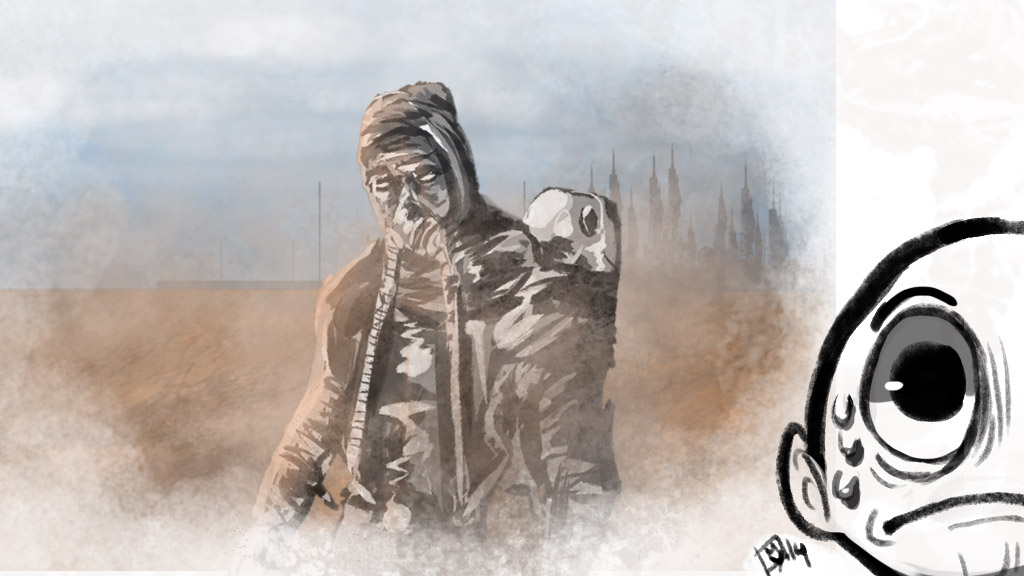Waiting For The Haemorrhagic Fever to Break
by Gino Fanelli | published Oct. 23rd, 2014
Do you recall the great Swine Flu plague of 2009?
Five years have passed since then. Specialized military forces still prowl the streets in search of sneezing, fever-rage-driven hogs. New York City and Los Angeles continue to attempt to rebuild their once sprawling metropolises, torn to rubble by panicked masses of citizens in search of the few surviving vaccines. I myself write this from my sealed, steel-reinforced bunker two feet below the Mojave Desert somewhere west of Roswell. My girlfriend, Mila Kunis, has taken our last oxygen tank out into the wasteland in search of supplies.
Yeah, none of that happened.
Of course, there was a certain time where we were expecting just such a scenario to happen. In fact, we still are. All we've done is simply change the name of the disease and country of origin. Unless you've been in a coma for the past three months or are still hiding out from H1N1 in your own sealed bunker with your own Hollywood actress lover, you've probably already figured out Ebola is the replacement disease I'm referring to.
Ebola is a scary disease, let's be clear on that. It's got all of the makings for a Cabin Fever sequel coming soon to a convenient store bargain bin near you. Blood out of every orifice? Check. Relentless, vicious diarrhea? Check. Country of origin being the deep, dark jungles of Africa? You bet.
However, despite the spooky connotations of Ebola, the fact of the matter is that this is a case of media hype more than a real potential threat. First, we have to make the evaluation of just how deadly Ebola is. On average, Ebola has around a 50 percent fatality rate. That's pretty bad, right? And it would be, if we didn't take into account that almost all reported cases of Ebola prior to a couple months ago come from places like Sierra Leone, which is the epicenter of the current outbreak. Sierra Leone has a life expectancy of 47.5 years. Over a quarter of all babies die before the age of 5. We're talking about, quite literally, the least developed country on the planet. And even still, Ebola has racked up a death toll of 930 in Sierra Leone since March, which is no doubt a sad number; statistically speaking, however, about 7,500 children died during child birth in Sierra Leone in that same time period.
But what about the guy who in Dallas who died in America while getting treatment? It's important to keep in mind that he wasn't receiving real treatment until he was extremely sick, as well as the fact that the hospital has pretty much no idea what his health condition was like before contracting Ebola. However, his nurse at the Texas Health Presbyterian Hospital has now been diagnosed with Ebola, marking the first case of Ebola contracted on U.S. soil.
Perhaps the largest point to make note of is that Ebola is not, an airborne or water-borne contagion. It can only be contracted by direct contact with bodily fluids from someone with the condition. Considering that the virus dies upon contact with oxygen, as well as the fact that in its natural environment, with next to no health system in play, it has claimed less lives than texting and driving in the United States this year, Ebola doesn't really seem to pull much rank as a highly contagious disease.
Should we be scared of Ebola? The short answer is no. The longer answer is, we should always be prepared for an epidemic. We should always be developing treatments for diseases that could pose a threat, and our medical system should always be a defense. However, that does not mean we should be in a constant state of hypochondriacal paranoia. And when the day comes when Ebola tears through our country like the Black Plague, I'll be sitting by the phone, waiting for Mila to give me a call.



